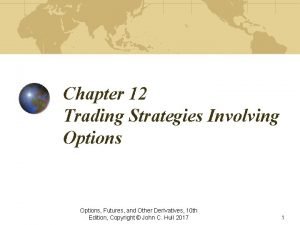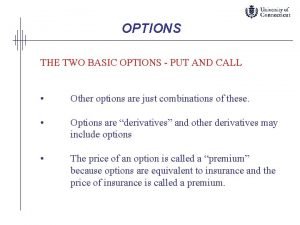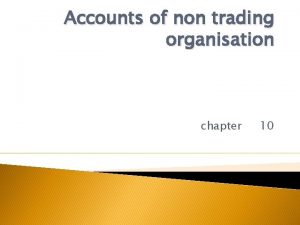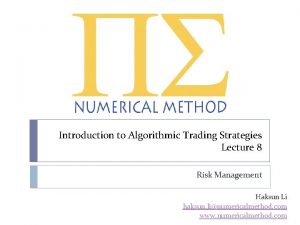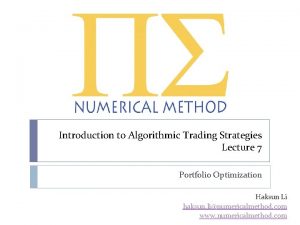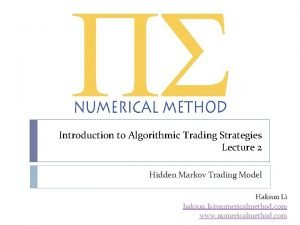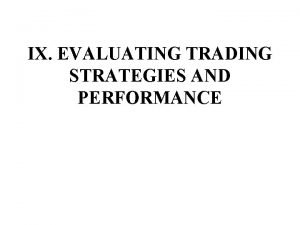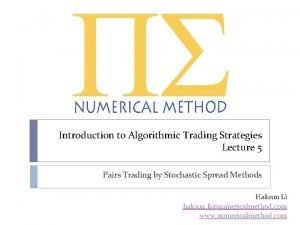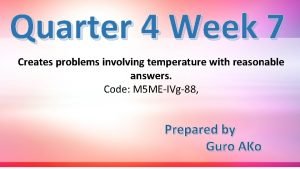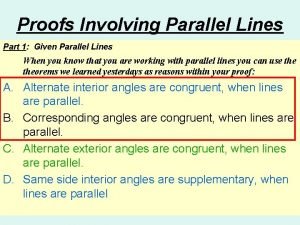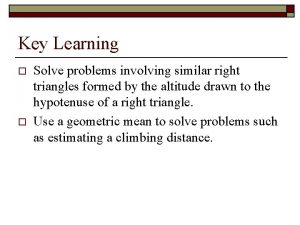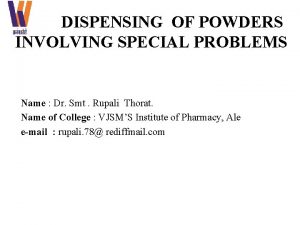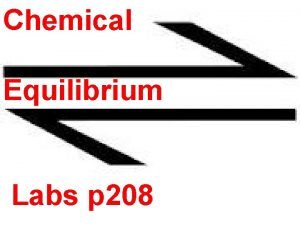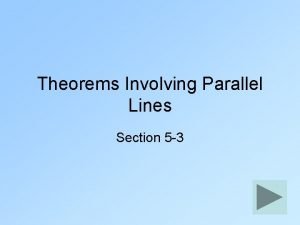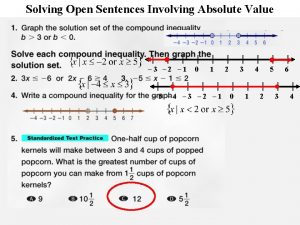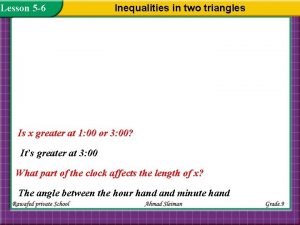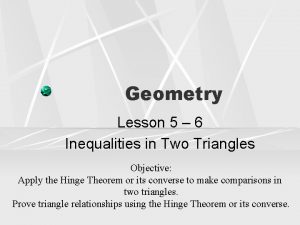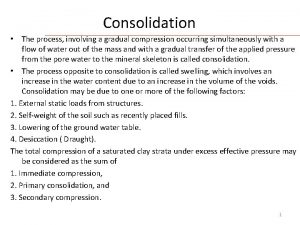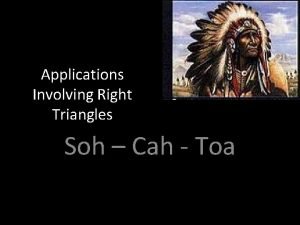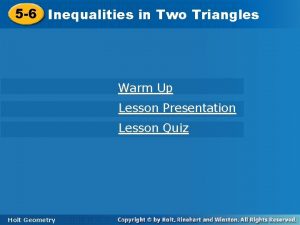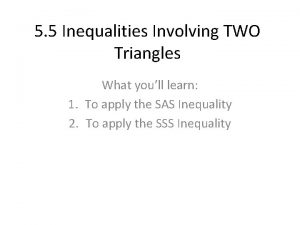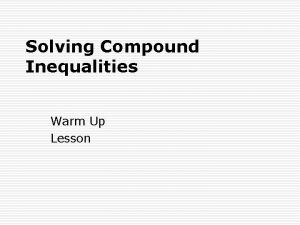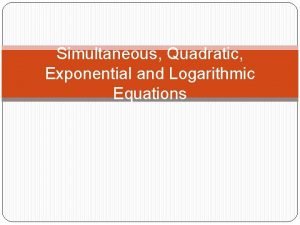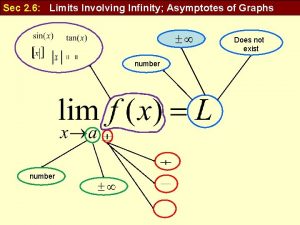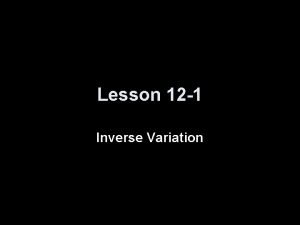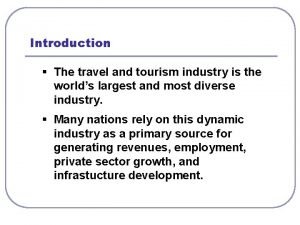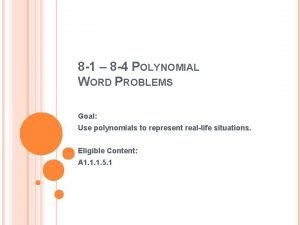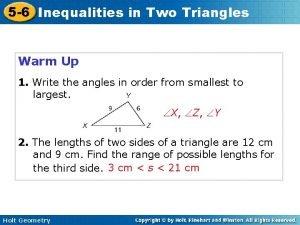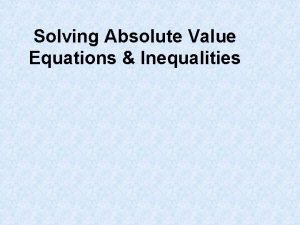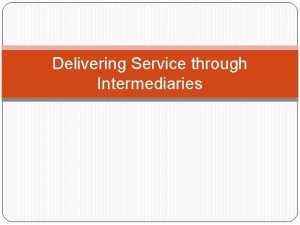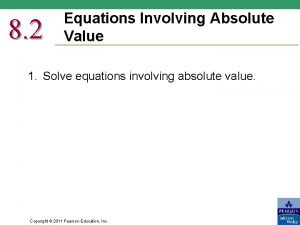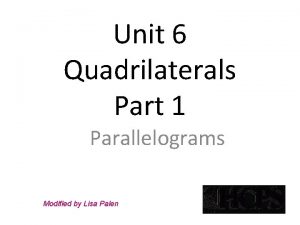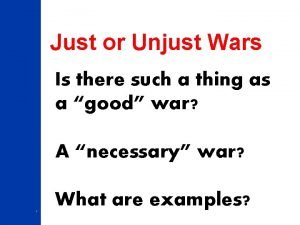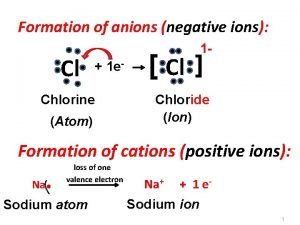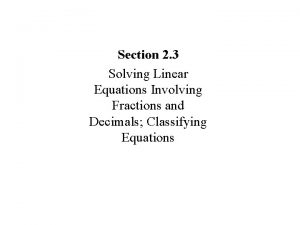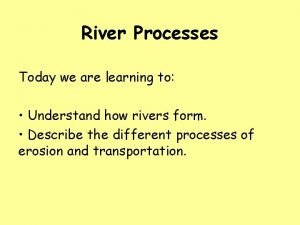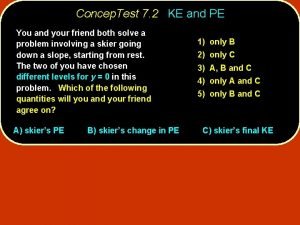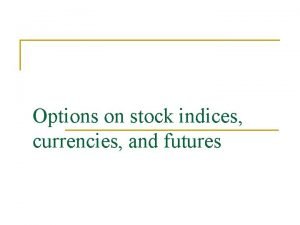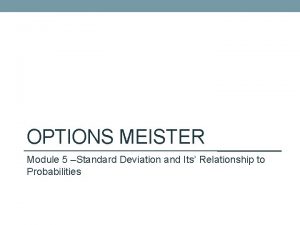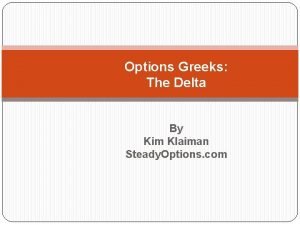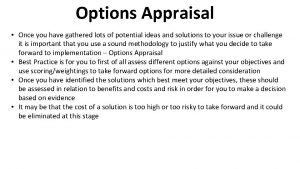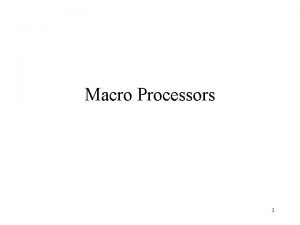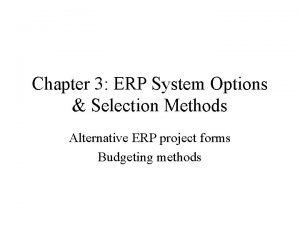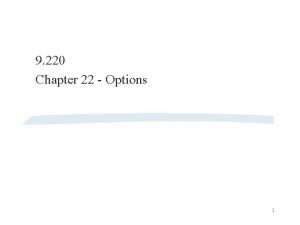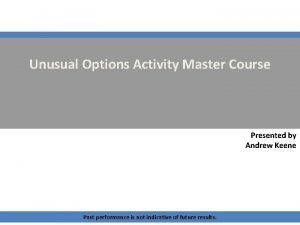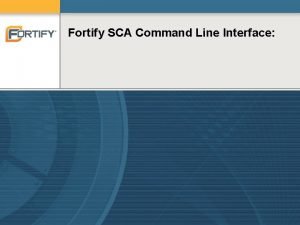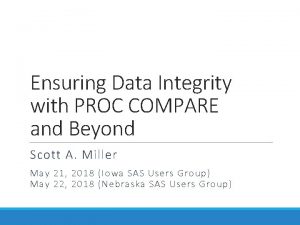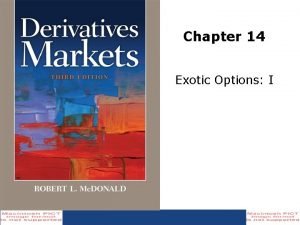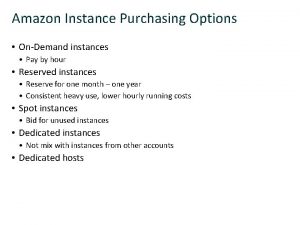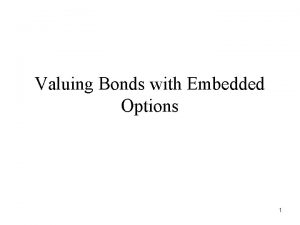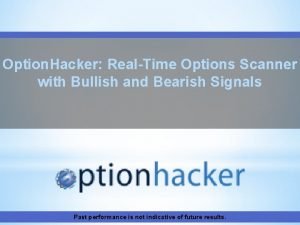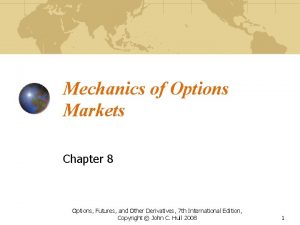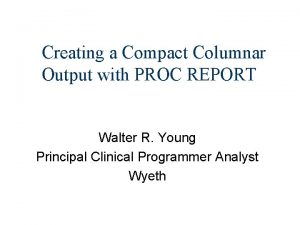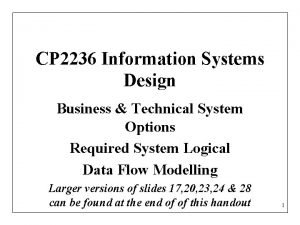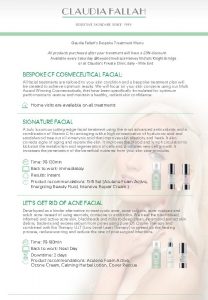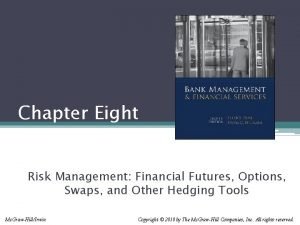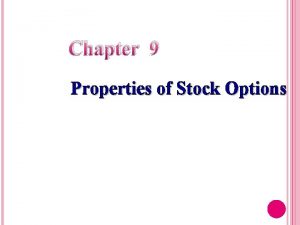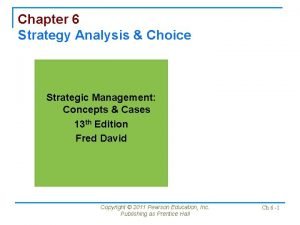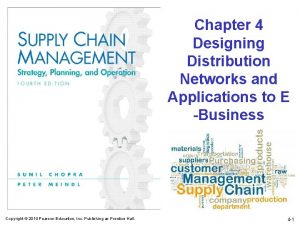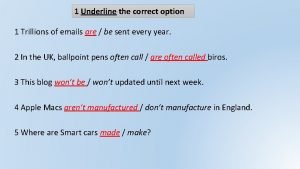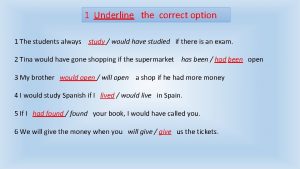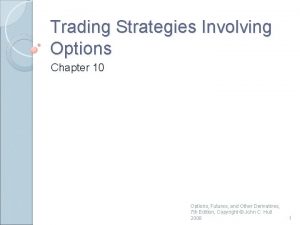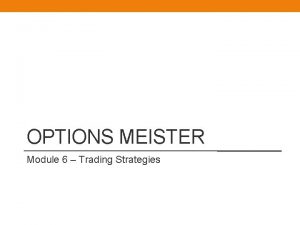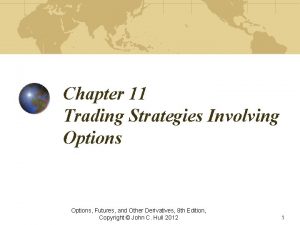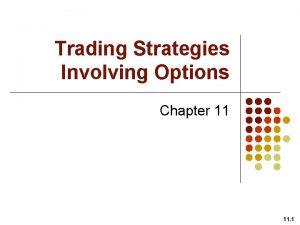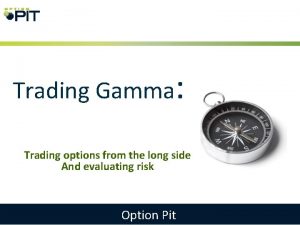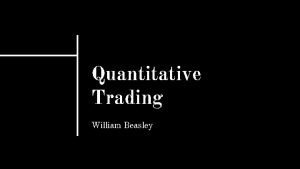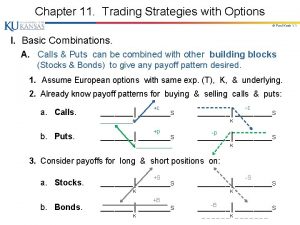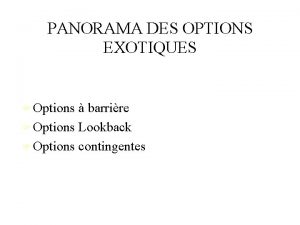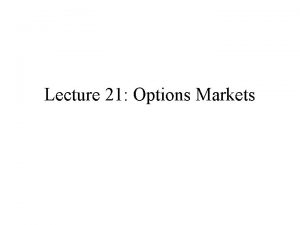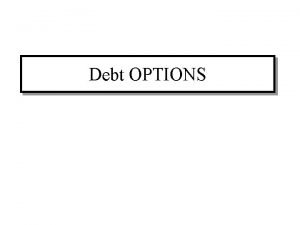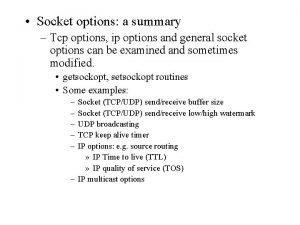Chapter 12 Trading Strategies Involving Options Strategies to

























































































































- Slides: 121

Chapter 12 Trading Strategies Involving Options

Strategies to be Considered 1. Bond plus option to create principal protected note 2. Stock plus option 3. Two or more options of the same type (a spread) 4. Two or more options of different types (a combination) 2

Principal Protected Note • Allows investor to take a risky position without risking any principal • Example: $1000 instrument consisting of • 3 -year zero-coupon bond with principal of $1000 • 3 -year at-the-money call option on a stock portfolio currently worth $1000 3

1. Principal Protected Note = Bond + Call option Allows investor to take a risky position without risking any principal Pay off per $ 100 invested $100 0% Reference asset returns

Q: Is it a good deal for investor A: No. When banks sell this, they are sure that they get profits. Fees Time value of money Credit risks Just get the principal back after many years is not a good investment. Banks can go bankrupt

. 2 Trading an Option and the Underlying Asset (synthetic short put) (synthetic put) 2. 1 Covered Call 2. 2 Reverse of covered call = naked call + long asset (short call) = long call + short asset 2. 3 Protective put (synthetic call) 2. 4 Reverse of protective put = long put + long asset = short put + short asset (synthetic short call)

2. 1 Covered Call (synthetic short put) Profit Long asset Covered call ST K Risk Short call (naked call) Unlimited loss -∞

Naked call Using dynamic strategy Covered If asset price is greater than K, use covered call If asset price is lower than K, use naked call Why use dynamic strategy? Because we predicted that the price will decrease. So, we use naked call (short call) If price increase, risk for us. Instead of using long or short position in asset, we can also use long or short position of futures on the underlying asset to create Synthetic options

2. 1 Covered call (Con't) Long stock profit & loss = ST - SO Short call profit & loss = Min (K-ST, 0) + c Covered call profit & loss = ST – S 0 + Min (K-ST, 0) + c If ST ≤ K long call not exercise long call exercise profit = ST – S 0 + c If ST ˃ K profit = ST – S 0 + K- ST +c = K-S 0 + C

Actual short put profit & loss = Min (ST - K, O) + p If ST ≤ K long put exercise profit = ST - K + p If ST ˃ K long put not exercise profit = p Covered call break-even stock price ST = S 0 - C

2. 2 Reverse of covered call (Synthetic put) Profit Long call ST K Synthetic put Short asset

Short asset : profit & loss = S 0 – ST Long call : profit & loss = Max (ST – K, 0) – C Synthetic put : profit & loss = S 0 -ST + Max (ST – K, 0) - C If ST ≤ K long call not exercise profit = S 0 – ST – C If ST ˃ K long call exercise Profit = S 0 – ST +ST – K – C = S 0 – K – C

Actual put profit & loss = Max (K - ST, 0) – P If ST ≤ K, profit = K- ST – P If ST ˃ K, profit = - P

2. 3 Protective Put (use put as an insurance) synthetic call Profit Long asset Protective put K ST Long put This is the classic application for put. We have asset, we are afraid that the price will decrease.

Long stock : profit & loss = ST – S 0 Long put : profit & loss = Max (K- ST, 0) – p Protective : profit & loss = ST – S 0 + Max (K – ST, 0) – P If ST ˂ K exercise long put profit = ST – S 0 + K – ST – p = K – S 0 – p If ST ≥ K not exercise long put profit = ST – S 0 – p

2. 3 Protective Put Actual put profit & loss = Max (ST – K, 0) – c If ST ˂ K, profit = – c If ST ≥ K, profit = ST – K – c

2. 4 Reverse of protective put (synthetic short call) Short put K ST Synthetic short call Short stock

Short stock : profit & loss = S 0 – ST Short put : profit & loss = Min (ST – K, 0) + p Synthetic short call : profit & loss = S 0 – ST + Min (ST- K, 0) + p If ST ˂ K long put exercise profit = S 0 – ST + ST – K + p = S 0 – K + p If ST ≥ K long put not exercise profit = S 0 – ST + p

2. 4 Reverse of protective put Actual short call profit & loss = Min (K - ST, O) + P If ST ˂ K, profit = C If ST ≥ K, profit = K - ST + C

. 3 Spreads involves taking a position in two or more options of the same type. Spreads offer the potential for a small profit while limiting the risk. Risk reduction is achieved by being long in one option and short in another.

3. 1 Bull Spreads 3. 5 Calendar Spreads ● Bull spreads using calls ● Calendar spreads using calls ● Bull spreads using puts ● Calendar spreads using puts 3. 2 Bear Spreads ● Bear spreads using puts 3. 3 Box Spreads 3. 4 Butterfly spreads ● Butterfly spreads using calls ● Butterfly spreads using puts 3. 6 Diagonal Spreads

3. 1 Bull spreads 1. Bull spreads using calls - long call at K 1 Same maturity - short call at K 2 K 1 ˂ K 2 So different call premium C 1 ˃ C 2 Pay C 1 , receive C 2 So bull spreads using calls requires an initial investment.

Example Long call , K 1 = 14 , C 1 =1. 9 long pay call premium Short call , K 2 = 16 , C 2 = 1 short receive call premium Net cash flow , initial investment = - C 1 + C 2 = -1. 9 + 1 = - 0. 9

ST Value/Payoff Call 1 K 2 Profit/loss Call 2 12 0 0 -0. 9 13 0 0 -0. 9 14 0 0 -0. 9 15 1 0 0. 1 16 2 0 1. 1 17 3 -1 1. 1 18 4 -2 1. 1 . . . ST ≤ K 1 ˂ S T ˂ K 2 ST ≥ K 2

Bull spreads using calls (cont’) Profit Long call , K 1 K 2 – K 1 + C 2 – C 1 = 1. 1 C 2 = 1 - C 1 +C 2 = - 0. 9 14 14. 9 16 K 1 BE Bull spread ST K 2 C 1 = -1. 9 Short call , K 2 Break – even = K 1 + C 1 C 2 = K 1 + net premium = 14. 9

Long call : profit & loss = Max (ST – K , 0) – C K 1 , C 1 Short call : profit & loss = Min (K – ST , 0) + C K 2 , C 2 Bull spreads : profit & loss = Max (ST – K , 0) – C, + Min (K 2 – ST, 0) + C 2 Three ranges 1. ST ≤ K 1 2. K 1 ˂ ST ˂ K 2 3. ST ≥ K 2 1 2 3

Range Call 1 : Long call Short call : call 2 If ST ≤ K 1 Not exercised If K 1 ˂ ST ˂ K 2 Exercised Not exercised If ST ≥ K 2 Exercised exercised

Bull spreads using calls (cont’) Range Payoff Call 1 (long) ST ≤ K 1 Call 2 (short) Right to buy Obligation to sell 0 0 Not exercised Profit & loss Total Call 1 (long) Call 2 (Short) 0 -C 1 C 2 Total - C 1 + C 2 ˂ 0 ST – K 1 – C 1 + C 2 K 1 ˂ S T ˂ K 2 ST – K 1 0 ST – K 1 – C 1 C 2 Depend on ST Not exercised Depend on ST Sell Buy ST ≥ K 2 ST – K 1 Sell Buy K 2 – K 1 – C 1 +C 2 K 2 – S T Sell Buy K 2 – K 1 ST – K 1 – C 1 K 2 – S T + C 2

Maximum loss = - C 1 + C 2 Always negative because C 1 ˃ C 2 Maximum profit = K 2 – K 1 + C 2 – C 1 Break - even range = K 1 ˂ ST ˂ K 2 Set profit = 0 ST – K 1 – C 1 + C 2 = 0 ST = K 1 + C 1 – C 2 • A Bull spread strategy limits the investor’s upside as well as downside risk • Investor has a call option with a strike price = K 1 and give up some upside potential by selling a call option with K 2 • In return for giving up the upside potential, investor gets the price of the option with strike price K 2

Bull spreads using call (cont’) profit Bull spread vs long call Long call Bull Spread 1. 1 14 14. 9 15. 9 16 ST - 0. 9 - 1. 9 Smaller loss for bull spread, lower initial investment.

Bull spread reach break-even point easier than long call Maximum loss Break–even at ST Long call -C K+C Bull spread -C 1 + C 2 K 1 + C 2 – C 2 When should we use bull spread? expect small increase in stock price because of limited maximum profit.

3. 1 Bull Spreads (cont’) 2. Bull spreads using puts - Long put at K 1 Same maturity - Short put at K 2 K 1 ˂ K 2 So, different put premium p 1 ˂ p 2 Pay p 1 , receive p 2 So, bull spreads using puts will provide a net reception of premium.

Example Long put, K 1 = 14 , p 1 = 2 Long pay put premium Short put, K 2 = 16 , p 2 = 3. 05 Short receive put premium Net initial cash flow = - p 1 + p 2 = -2+3. 05 = 1. 05

ST Value/Payoff Put 1 K 2 Profit/loss = Put 1 + Put 2+ 1. 05 Put 2 12 2 -4 -0. 95 13 1 -3 -0. 95 14 0 -2 -0. 95 15 0 -1 0. 05 16 0 0 1. 05 17 0 0 1. 05 18 0 0 1. 05 ST ≤ K 1 ˂ S T ˂ K 2 ST ≥ K 2

Bull Spreads using puts (cont’) profit p 2 = 3. 05 - P 1 + P 2 = 1. 05 K 1 – K 2 –P 1+P 2 = 0. 95 P 1 = -2 Short put, K 2 14 14. 95 16 K 1 BE K 2 Bull spread ST Long put, K 1 Break-even = K 2 + P 1 – P 2 = 14. 95

Long put : Profit & Loss = Max (K - ST, 0) - p , K 1 , p 1 Short put : Profit & Loss = Min (ST - K, 0) + p , K 2 , p 2 Bull spread : Profit & Loss = Max (K 1 - ST , 0) + Min (ST - K 2, 0) + p 2 Three ranges K 1 1 ST ≤ K 1 K 2 2 K 1 < S T < K 2 1 3 ST ≥ K 2 2 3

Range Put 1(Long) Put 1 (short) ST ≤ K 1 Exercised K 1 < S T < K 2 not exercised Exercised ST ≥ K 2 not exercised

Bull spread using puts (cont') Payoff Range ST ≤ K 1 < S T < K 2 Put 1 (Long) Profit & loss Total Put 1 (Long) Right to sell Put 2 (Short) Obligation to Buy K 1 – S T ST – K 2 K 1 – S T – p 1 Sell Buy 0 ST – K 2 Sell Buy Depend on ST - p 1 Put 2 (short) Total ST – K 2 + p 2 K 1 – K 2 – p 1 + p 2 ST – K 2 +p 2 ST – K 2 – p 1 + p 2 Not exercised ST ≥ K 2 0 0 Not exercised Depend on ST - p 1 0 p 2 - p 1 + p 2

Maximum loss = K 1 - K 2 - P 1 + P 2 Maximum profit = - P 1 + P 2 Break -even ---> range = K 1 < ST < K 2 set profit = 0 ST - K 2 - P 1 + P 2 = 0 ST = K 2 + P 1 - P 2 Bull spreads using calls are more popular ---> When short put is deep ITM, long position may choose to early exercise, that is when profit & loss of bull spread is at maximum.

3. 2 Bear Spreads 1 Bear spread using puts - Short put at K 1. receive p 1 - Long put at K 2 pay p 2 K 1 < K 2 p 1 < p 2 Bear spread using puts requires an initial investment. Example Short put , K 1 = 14 , P 1 = 2 Long put , K 2 = 16 , P 2 = 3. 05 Net initial cash flow = P 1 - P 2 = 2 - 3. 05 = -1. 05

ST Value/payoff Put 1 Profit/loss = put 1+put 2 -1. 05 Put 2 12 -2 4 0. 95 13 -1 3 0. 95 14 0 2 0. 95 15 0 1 -0. 05 16 0 0 -1. 05 17 0 0 -1. 05 18 0 0 -1. 05 ST ≤ K 1 < ST < K 2 ST ≥ K 2

Bear spread using puts (cont') Short put, K 1 P 1 = 2 K 2 -K 1+P 1 -P 2=0. 95 14 16 ST P 1 -P 2 = 1. 05 K 1 BE K 2 Bear spread Long put, K 2 P 2 = -3. 05 Break-even = K 2+P 1 -P 2 = 14. 95

Short put : Profit & Loss = Min (ST – K , 0) + P K 1 , P 1 Long put : Profit & Loss = Max (K – ST , 0) - P K 2 , P 2 Bull spread : Profit & Loss = Min (ST – K 1 , 0)+ P , + Max (K 2 - ST , 0 - P 2 Three ranges K 1 1 ST ≤ K 1 K 2 2 K 1 < S T < K 2 1 3 ST ≥ K 2 2 3

Range Put 1 (Short) Put 2 (Long) ST ≤ K 1 Exercised K 1 < S T < K 2 not exercised Exercised ST ≥ K 2 not exercised

Bear spread using puts (cont') Range Payoff Put 1(Short) Obligation to buy ST ≤ K 1 < S T < K 2 ST ≥ K 2 Put 2(Long) Right to sell Profit & loss Total ST – K 1 K 2 – ST K 2 – K 1 0 K 2 – ST 0 0 0 Put 1 (Short) Put 2(long) Total ST – K 1 + P 1 K 2 – ST – P 2 K 2 – K 1 + P 1 –P 2 P 1 K 2 – ST – P 2 K 2 – ST + P 1 – P 2 P 1 - P 2 P 1 – P 2

Maximum loss = P 1 - P 2 This is negative because P 1 < P 2 Maximum profit = K 2 - K 1 + P 1 - P 2 Break - even ---> range = K 1 < ST < K 2 Set profit = 0 K 2 - ST + P 1 - P 2 = 0 ST = K 2+P 1 -P 2 Using bear spread ---> investor who bought a put choose to give up some of the profit potential by selling a put with a lower strike price. In return for the profit given up, the investor gets the price of the option sold

3. 2 Bear spread (cont') 2 Bear spread using calls - Short call at K 1 receive call premium C 1 - Long call at K 2 pay call premium C 2 K 1 < K 2 C 1 > C 2 receive C 1 , pay C 2 Bear spread using calls provide a net reception pf premium. Example Short call , K 1 = 14, C 1 = 1. 9 Long call , K 2 = 16 , C 2 = 1 Net initial cash flow = C 1 - C 2 =1. 9 -1 = 0. 9

ST Value/Payoff Profit/loss = call 1 + call 2 + 0. 9 Call 1 Call 2 12 0 0 0. 9 13 0 0 0. 9 14 0 0 0. 9 15 -1 0 -0. 1 16 -2 0 -1. 1 17 -3 1 -1. 1 18 -4 2 -1. 1 ST ≤ K 1 < ST < K 2 ST ≤ K 2

Bear spread using calls (cont') Long put, K 2 C 1 = 1. 9 C 1 – C 2 = 0. 9 14 16 ST Bear spread C 2 = -1 K 1 – K 2 + C 1 – C 2 = 1. 1 K 1 BE K 2 Short put, K 1 Break-even = K 1 + C 1 –C 2 =14 + 1. 9 - 1 = 14. 9

Short call : Profit & Loss = Min (K - ST , 0) + C K 1 , C 1 Long call : Profit & Loss = Max (ST - K , 0) - C K 2 , C 2 Bull spread : Profit & Loss = Min ( K 1 - ST , 0)+ C, + Max (ST – K 2 , 0) - C 2 Three ranges K 1 1 ST ≤ K 1 K 2 2 K 1 < S T < K 2 1 3 ST ≥ K 2 2 3

Range Call 1 (Short) Call 2 (Long) ST ≤ K 1 not exercised K 1 < S T < K 2 Exercised not exercised ST ≥ K 2 Exercised

Bear spread using calls (cont’) Range ST ≤ K 1 Pay off Profit & loss Call 1(Short) Obligation to sell Call 2(Long) Right to buy Total Call 1 (Short) Call 2 (Long) Total 0 0 0 C 1 -C 2 C 1 – C 2 0 K 1 – S T + C 1 -C 2 K 1 – S T + C 1 – C 2 K 1 – S T ST – K 2 K 1 – S T + C 1 ST – K 2 – C 2 K 1 – K 2 + C 1 –C 2 Sell Buy K 1 – S T K 1 < S T < K 2 Sell Buy ST ≥ K 2

Maximum loss = K 1 - K 2 + C 1 - C 2 Maximum profit = C 1 - C 2 Break - even ---> range = K 1 < ST < K 2 set profit = 0 K 1 - S T + C 1 - C 2 = 0 ST = K 1 + C 1 - C 2 There is a risk of early exercise. The short call can be sufficiently ITM for long position to early exercise, while the long call is still OTM. Even if the long call is ITM , the cash flow from early exercise will be negative. Early exercise ensures that the bear spreader will incur a cash outflow. Because that loss occurs prior to expiration , it is greater in present value term than if it had occurred at expiration.

Problem 12. 10 Put 1 , K 1 = 30 , p 1 = 4 Put 2 , K 2 = 35 , p 2 = 7 create a) bull spread b) bear spread

Problem 12. 10 put 1 , K 1 = 30 , P 1 = 4 put 2 , K 2 = 35 , P 2 = 7 create a) bull spread b) bear spread a) bull spread : Long put 1 , short put 2 Short put, K 2 P 2 = 7 3 Bull spread 30 35 ST -2 P 1 = -4 K 1 BE K 2 Long put, K 1 Break-even = K 2 + P 1 – P 2 = 35 + 4 - 7 = 32

Range Payoff Profit ST ≤ K 1 – K 2 = 30 – 35 K 1 – K 2 – P 1 + P 2 = 30 – 35 - 4 +7 = - 2 ST ≤ 30 K 1 < S T < K 2 =-5 ST – K 2 = ST - 35 ST – K 2 – P 1 +P 2 =ST -35 – 4 +7 = ST - 32 0 - P 1 + P 2 = - 4 +7 = 3 30 < ST < 35 ST ≥ K 2 ST ≥ 35

Problem 12. 10 (cont’) b) bear spread : Short put 1 , long put 2 Profit Short put, K 1 P 1 = 4 2 30 32 35 ST K 1 BE K 2 Bear spread -3 Long put, K 2 P 2 = -7 Break-even = K 2 + P – P 2 = 32

Range Payoff Profit ST ≤ K 1 K 2 – K 1 = 30 – 35 = 5 K 2 – K 1 – P 1 + P 2 = 35 – 30 + 4 - 7 ST ≤ 30 K 1 < S T < K 2 = 2 K 2 – ST = 35 - ST 30 < ST < 35 ST ≥ K 2 ST ≥ 35 K 2 - ST – P 1 +P 2 = 35 - ST + 4 - 7 = 32 - ST 0 P 1 - P 2 = 4 - 7 = - 3

Problem 12. 20 Short put 1 , K 1 = 25 , p 1 = 2. 15 Long put 2 , K 2 = 29, p 2 = 4. 75 What is the initial investment ? What is the total payoff when the stock price St is 23, 28, 33?

Problem 12. 20 • What is the initial investment ? initial investment = receive p 1, pay p 2 = 2. 15 - 4. 75 pay • = 2. 6 What is the total payoff when the stock price St is 23, 28, 33? a) 23 b) 28 K 1 < S T < K 2 payoff = K 2 - ST = 29 - 28 =1 ST < K payoff = K 2 - K 1 = 29 - 25 =4 c) 33 ST > K 2 payoff =0

3. 3 Box spreads - Long call at K 1 Bull spread using calls - Short call at K 2 pay C 1, receive C 2 - Short put at K 1 Bear spread using puts initial investment -C 1 C 2 P 1 - Long put at K 2 receive P 1, pay P 2 K 1< K 2 -P 2 Total -C 1+C 2 +P 1 -P 2

Three ranges 1 ST ≤ K 1 K 2 K 1 < S T < K 2 1 3 ST ≥ K 2 2 3

Range Call 1 (Long) Call 2 (Short) Put 1 (Short) Put 2 (long) Total ST ≤ K 1 not exercised Exercised -C 1 + C 2 + P 1 –P 2 Profit -C 1 -C 2 ST - K 1 + P 1 K 2 - S T - P 2 -K 1+K 2 Payoff 0 0 S T- K 1 K 2 - ST K 2 –K 1 < S T < K 2 Exercised not exercised Exercised -C 1+C 2+P 1 -P 2 Profit ST – K 1 –C 1 C 2 P 2 K 2 - S T - P 2 -K 1+K 2 Payoff S T- K 1 0 K 2 - ST K 2 -K 1 S T≥ K 2 Exercised not exercised profit ST – K 1 – C 1 K 2 - S T + C 1 P 1 -P 2 payoff ST –K 1 K 2 - ST 0 0 -C 1+C 2+P 1 -P 2 -K 1+K 2 K 2+K 1 Payoff and profit same for all cases

3. 3 Box spreads (cont') Pay receive Pay At initiation, we pay = c 1 – c 2 – p 1 + p 2 Maturity At maturity, we receive = K 2 – K 1 K 2 -K 1 C 1 -C 2 -P 1+P 2 (K 2 -K 1)e-rt Discount back (K 2 - K 1)e-rt = C 1 - C 2 -P 1+P 2

(K 2 - K 1)e-rt = C 1 - C 2 –P 1+P 2 Rearrange to make them all positive C 1 + P 2 = (K 2 -K 1)e-rt +C 2 +P 1 Constant if C 1+P 2 > (K 2 -K 1)e-rt +C 2+P 1 we will short C 1 & P 2 arbitrage opportunity short box spread long C 1 & P 1 long T-bill , F = K 2 - K 1 If C 1, +P 2 < (K 2 -K 1) e-rt + C 2 +p 1 we will Short (K 2 - K 1) e-rt (borrow) Short c 2 & p 1 Long c 1 & p 2 long box spread arbitrage opportunity

3. 4 Butterfly Spreads 1. Butterfly spread using calls - Long 1 call at K 1 - Short 2 calls at K 2 - Long 1 call at K 3 K 2= K 1+K 3 2 K 2=K 1+K 3 2 K 1< K 2< K 3 Example - Long 1 call , K 1 = 8 , C 1= 1. 25 - - Shot 2 calls, K 2 = 10, C 2 = 0. 6 + - Long 1 call, K 3 = 12, C 3= 0. 35 initial investment = -1. 25 +(0. 6 x 2)- 0. 35 = - 0. 4

Butterfly Spreads (cont’) 1. Butterfly spread using calls (cont’) ST Value/payoff Call (long) K 1 K 2 K 3 Call 2 x 2 (Short) Profit/loss = total payoff -0. 4 Call 3 (Long) Total 6 0 0 -0. 4 7 0 0 -0. 4 8 0 0 -0. 4 9 1 0 0 1 0. 6 10 2 0 0 2 1. 6 11 3 -1 x 2=-2 0 1 0. 6 12 4 -2 x 2=-4 0 0 -0. 4 13 5 -3 x 2 = -6 1 0 -0. 4 14 6 -4 x 2=-8 2 0 -0. 4 15 7 -5 x 2= -10 3 0 -0. 4 ST ≤ K 1 < S T < K 3 ST ≥ K 3

Butterfly spread using calls (cont’) Long 1 call, K 1 Long 1 call , K 3 2 C 2 = 1. 2 8 -C 3 = -0. 35 2 C 2 – C 1 – C 3 = -0. 4 -C 1 = - 1. 25 K 1 8. 4 10 K 2 11. 6 12 K 3 ST Short 2 calls, K 2 Lower Break – even => ST = K 1+C 1 – 2 C 2 + C 3 = 8+1. 25 -2(0. 6)+0. 35 = 8. 4 Higher Break – even => ST = K 3 – C 1 + 2 C 2 –C 3 = 12 -1. 25+2(0. 6) +0. 35 = 11. 6

Long call : profit & loss = Max(ST-K, 0) -C K 1, C 1 & K 3, C 3 Short call : profit & loss = Min(K-ST, 0) +C K 2, 2 x. C 2 Butterfly spread profit &loss = Max(ST-K 1, 0)-C 1, +Max (ST-K 3, 0)-C 3 +2 Min(K 2 -ST, O)+ 2 C 2 Three ranges K 2 K 1 1. ST ≤ K 1 K 3 2. K 1 < ST < K 2 1 3. K 2 < ST < K 3 2 4. ST ≥ K 3 3 4

Butterfly spread using calls (cont’) Rang Payoff Call (long) Right to buy ST ≤ K 1 < S T ≤ K 2 0 not exercised ST – K 1 Sell Buy K 2 < S T < K 3 ST – K 1 Call 2 x 2 (short) Obligation to sell Profit/loss Call 3 (Long) Total Right to buy 0 not exercised 2(K 2 – ST) = K 1+K 3 -2 ST Total payoff – C 1 + 2 C 2 -C 3 0 0 -C 1 +2 C 2 –C 3 not exercised 0 S T – K 1 not exercised Depend on ST 0 K 3 - ST ST –K 1 –C 1+2 C 2 –C 3 K 3 –ST –C 1+2 C 2 –C 3 not exercised Sell Buy ST ≥ K 3 ST – K 1 2(K 2 -ST) = K 1+K 3 -2 ST ST-K 3 Sell Buy 0 -C 1+2 C 2 -C 3

Maximum loss = -C + 2 C 2 –C 3 Maximum profit = K 2 – K 1 –C 1+ 2 C 2 –C 3 Lower Bread-even => Range = K 1 < ST ≤ K 2 Set profit = 0 ST = K 1+ C 1 -2 C 2 + C 3 Higher Break-even => Range = K 2 < ST < K 3 Set profit = 0 ST = K 3 –C 1 + 2 C 2 – C 3

Problem 12. 4 butterfly spread. K C Call 1 15 4 Call 2 17. 5 2 Call 3 20 0. 5 Long 1 call 1, short 2 call, Long 1 call 3 Initial investment = -4 + 2(2) -0. 5 = -0. 5

Construct table to show payoff Range Payoff Profit = payoff -0. 5 ST ≤ K 1 0 -0. 5 K 1 < S T ≤ K 2 ST – K 1 = ST – 15. 5 K 2 < ST <K 3 – ST = 20 – ST 19. 5 -ST ST ≥ K 3 0 -0. 5

Butterfly spread using puts -Long 1 put at K 1 -Shot 2 puts at K 2 -Long 1 put at K 3 K 2 = K 1+K 3 , 2 K 2 = K 1+K 3 2 K 1 < K 2 < K 3 Example -Long 1 put, K 1= 55, P 1 = 3 – -Short 2 puts, K 2= 60, P 2=5 + -Long 1 put, K 3 = 65, P 3 =8 – initial investment = -P 1+2 P 2 =-3 + 2(5) +8 =-1

Butterfly spread using puts (cont’) ST K 1 K 2 K 3 51 53 55 57 60 63 65 67 69. . . Payoff Put 1 (Long) Put 2 (Short) Put 3 (Long) Total Profit/loss =payoff -1 4 2 0 0 0 0. . . -9 x 2 = -18 -7 x 2 = -14 -5 x 2 = -10 -3 x 2 = -6 0 0 0 14 12 10 8 5 2 0 0 0 2 5 2 0 0 0 -1 -1 -1 1 4 1 -1 -1 -1

Butterfly spread using puts (cont’) Short 2 puts, K 2 2 P 2 = 10 2 P 2 – P 1 – P 3 = -1 55 60 65 K 1 K 2 K 3 ST -P 1 = - 3 Long 1 put, K 1 Long 1 put , K 3 -P 3 = -8 Lower Break – even => K 1+P 1 – 2 P 2 + P 3 = 55+3 -10+8 = 56 Higher Break – even => K 3 – P 1 + 2 P 2 –P 3 = 65 -3+10 -8 = 64

Long put : profit & loss = Max(K-ST, 0)-P K 1 P 1 & K 3 , P 3 Short put : profit & loss = Min (ST-K 1, 0) +P K 2, P 2 Butlery spread : profit & loss = Max(K 1, -ST, 0) - P 1 +Max (K 3 -ST, 0)-P 3 + 2 Min(ST-K 2, 0)+P 2 Four ranges K 2 K 1 1. ST ≤ K 1 K 3 2. K 1 < ST ≤ K 2 1 3. K 2 < ST < K 3 2 4. ST ≥ K 3 3 4

Butterfly spread using puts (cont’) Range Put 1 (Long) 2 x Put 2 (Short) Put 3 (Long) Total Profit/loss =Total payoff –P 1+2 P 2 -P 3 ST ≤ K 1 – S T 2(ST –K 2) K 3 – S T 0 -P 1 + 2 P 2 – P 3 K 1<ST≤ K 2 0 2(ST-K 2) K 3 - S T ST – K 1 –P 1 +2 P 2 – P 3 K 2 < ST<K 3 ST ≥ K 3 Payoff 0 0 =2 ST-K 1 -K 3 =2 ST –K 1 -K 2 0 K 3 - S T 0 0 K 3 – S T 0 K 3 – ST – P 1 + 2 P 2 – P 3 -P 1+ 2 P 2 – P 3


Problem 12. 22 Same numbers with the example. Construct the table of payoff and profit Range Payoff Profit ST ≤ K 1 0 -1 K 1 < S T ≤ K 2 65 - ST 64 –ST K 2 <ST <K 3 ST -55 ST – 56 ST ≥ K 3 0 -1

3. 5 Calendar Spreads • Same K Same intrinsic value • Different T • Same type of option • Different position (long & short) 1. Calendar spread using calls - Short 1 call , T 1 - Long 1 call, T 2 T 1 ˂ T 2 Usually C 1 ˂ C 2 So, negative initial cash flow

K ST

• It is not possible to hold both option until expiration. • Longest possible holding period = until the shorter –maturity option’s expiration. • The investor obtains the greatest profit if the stock has low volatility and trades within a narrow range. • If the stock price moves substantially, the investor will likely incur a loss.

3. 5 Calendar Spreads (cont’) Calendar spreads using puts - Short 1 put , T 1 - Long 1 put , T 2 T 1˂ T 2 more time value Profit K ST

Reverse calendar spreads Using calls Using puts - Long 1 call , T 1 - Long 1 put, T 1 - Short 1 call , T 2 - Short 1 put, T 2 Profit K ST Expect the stock price to move into the extremes

3. 6 Diagonal spreads • Different T • Different K • Same type of option • Different position Example Long call at K 1, T 2 higher premium Short call at K 2, T 1 lower premium K 1 ˂ K 2 T 1 ˂ T 2

4. Combinations • Involves taking a position in both calls and puts on the same stock. 4. 1 Straddles 4. 2 Strips 4. 3 Straps 4. 4 Strangles

4. 1 Straddle • Same K • Same T • Same position • Different type of option (call+put) Straddle Long straddle (Bottom straddle or straddle purchase) Short straddle (Top straddle or straddle write) - Long 1 call - Short 1 call - Long 1 put - Short 1 put

Example • Call , K = 60 , C = 6 • Put , K = 60 , P = 4 Long 1 call & long 1 put long straddle Initial investment = - 6 - 4 = - 10

4. 1 Straddle (cont’) Long straddle = long call + long put ST Pay off Long call 30 35 40 45 50 55 60 65 70 75 80 85 90 0 0 0 5 10 15 20 25 30 Long put 30 25 20 15 10 5 0 0 0 0 Profit/loss = total payoff - 10 total 30 25 20 15 10 15 20 25 30 20 15 10 5 0 -5 -10 -5 0 5 10 15 20

4. 1 Straddle (cont’) : long Straddle Profit Long call Long straddle -P=-4 50 60 BE. K. -C=-6 - C + - P = -10 Lower break-even Higher Break – even 70 BE ST Long put =K–C–P = 60 – 6 -4 = 50 = K+C+P = 60+6+4 = 70

Long call : profit & loss = Max (ST- K, 0) – C Long put : profit & loss = Max (K – ST , 0) – P Long straddle : profit & loss = Max (ST- K , 0) – C+ Max (K- ST , 0) - P Call Put ST ≤ K not exercised ST ˃ K exercised not exercised

4. 1 Straddle (cont’) : Long straddle Stock Pay off Profit/loss =total payoff – C -P Long call Long Put total ST ≤ K 0 K – ST – C – P ST ˃K ST – K 0 ST – K ST - K – C – P Maximum loss = - C –P Maximum profit = unlimit

Lower Break – even range = ST ≤ K Set profit = 0 ST = K – C – P Higher Break – even range = ST ˃ K Set profit = 0 ST = K + C + P A straddle is on appropriate strategy for situations in which one suspects that the stock price will move substantially but does not know in which direction it will go.

4. 1 Straddle (cont’) Short straddle Example Short 1 call, K = 60, C = 6 Short 1 put , M = 60 , P = 4 Net can flow at initiation = 6+4 =10

ST Pay off Short call Short Put Total Profit/loss = total payoff + 10 40 0 -20 -10 45 0 -15 -5 50 0 -10 0 55 0 -5 -5 5 60 0 10 65 -5 -5 -5 5 70 -10 -10 0 75 -15 -15 -5 80 -20 -20 -10

Short straddle (cont’) C + P = 10 C=6 P=4 50 60 70 BE K BE Short put Short straddle Lower Break – even Higher Break – even =K-C–P = 60 – 6 – 4 = 50 =K+C+P = 60 + 6 + 4 = 70

Short call : profit & loss = Min(K – ST, O) + C Short put : profit & loss = Min (ST – K , O) + P Short straddle : profit & loss = Min (K-ST, O) +C + Min (ST- K , O) + P call Put ST ≤ K not exercised Exercised ST > K Exercised not exercised

Short straddle (cont’) Stock price Payoff Short call Short Put Total Profit & loss = Total payoff + C+P ST ≤ K 0 ST – K + C + P ST > K K- ST 0 K- ST K – ST + C + P Maximum loss = unlimit Maximum profit = C + P

Lower break-even => range = ST ≤ K Set profit = 0 ST = K – C – P Higher break-even => ST > K Set profit = 0 ST = K + C + P • An investor who use short straddle expects the market to stay within a narrow trading rang. • A short straddle is a high-risk strategy because of the potential for large losses if the stock price moved substantially , particularly upward • Butterfly spread is safer < limit loss >, but also lower profit.

4. 2 Strips • When we use straddle, it means that the probability that stock price will go up equals to the probability it will go down. • However, if we think bear market is more likely to be (more puts), we can use strips.

4. 2 Strips Long call Profit Strip BE K-c/2 -p K BE ST K+c+2 p -c -2 p Long 2 puts

4. 2 Strips • Initial investment = -c-2 p • Long 1 call : profit & loss = Max( ST –K, 0) –c • Long 2 puts : profit & loss = 2 Max(K-ST, 0)– 2 p • Strip : Profit & loss = Max( ST –K, 0) –c + 2 Max(K-ST, 0)– 2 p

Strips Payoff Stock Price Payoff Long call 0 ST ≤ K S T > K ST - K Long put x 2 2(K 0 ST ) Profit/Loss = payoff-c-2 p Total 2(K- ST ) ST - K 2 K-2 ST –c-2 p ST – K-c-2 p

4. 2 Strips • Lower break-even -> range = ST ≤ K Set profit = 0 2 K-2 ST –c-2 p = 0 2 ST = 2 K-c-2 p • Higher break-even -> range = ST > K set profit = 0 ST – K-c-2 p = 0 ST = K + c+ 2 p

4. 3 Straps Use straps when bull market is more likely to be (more calls) Long 2 calls Profit Strap BE K-2 c -p -p -2 c - p-2 c ST K BE K+c+p/2 Long 1 put

4. 3 Straps • Initial investment = -2 c-p • Long 2 calls : profit & loss = 2 Max(ST – K, 0)-2 c • Long 1 put : profit & loss = Max(K-ST, 0) –p • Strap: profit & loss = 2 Max(ST – K, 0)-2 c+Max(ST – K, 0)-p

Strap Payoff Stock Price Payoff Long call x 2 0 ST ≤ K ST > K 2(ST – K) Long put K 0 ST Total K- ST 2(ST – K) Profit/Loss = payoff-c-2 p K-ST – 2 c-p 2 ST – 2 K-2 c-p

4. 3 Straps • Lower break-even -> range = ST ≤ K Set profit = 0 K-ST – 2 c-p = 0 ST = K – 2 c- p • Higher break-even -> range = ST > K set profit = 0 2 ST – 2 K-2 c-p = 0 2 ST = 2 K+2 c+p = 0

4. 4 Strangles • A strangle is similar to a straddle Strangle 1. Use when we predict a volatile price but not sure which direction 2. Long position pays premium at initiation 3. Short position receives premium at initiation 4. Long 1 call + Long 1 put 5. Same K 5. Different K 6. ATM options 6. OTM options

4. 4 Strangles • Straddle use ATM options • How to make the strategy’s cost cheaper but still get profit when the price is volatile? • => OTM options are cheaper than ATM options. • However, if we want to long 1 OTM put. And long 1 OTM call. • (These two options have different K) • long 1 OTM put => S 0 < K 2 • long 1 OTM call => S 0 > K 1 • K 2 K 1. => Different K because it is impossible for S 0 to be greater and less than K at the same time, so different K. • C 2 < c , P 1 < P where C 2 and P 1 are strangle, c and p are for straddle

4. 4 Strangles • Strangle -> lower initial investment and lower profit more gentle slope than straddle • Example • Call, K 2 = 50, c 2 = 2 • Put, K 1 = 45, p 1 = 3 • Long 1 call at K 2, Long 1 put at K 1 ; K 1 < K 2 • Initial investment = -2 -3= -5

ST Long call Long put Total Profit/loss = total payoff -5 35 0 10 10 5 40 0 5 5 0 45 0 0 0 -5 50 0 -5 55 5 0 60 10 5 . . . Payoff

4. 4 Strangles Profit Long call Long strangle 40 BE 45 K 1 50 K 2 55 BE ST -2 -3 -5 Long put

4. 4 Strangles • Lower break-even = K 1 –c 2 –p 1 = 45 -2 -3 = 40 • Higher break-even = K 2 +c 2+p 1 = 50+2+3 = 55 • Long call: profit & loss = Max(ST – K 2 , 0 ) –c 2 • Long put: profit & loss = Max(K 1 -ST , 0) –p 1 • Long strangle: profit & loss = Max(ST – K 2 , 0 ) –c 2 + Max(K 1 -ST , 0) –p 1

ST Payoff Profit/loss = total payoffc 2 – p 1 Long call Long put Total ST ≤ K 1 0 K 1 - S T – c 2 – p 1 K 1 < S T < K 2 0 0 0 -c 2 - p 1 ST - K 2 0 ST - K 2 – c 2 –p 1

4. 4 Strangles (cont’) Maximum loss = - C 2 – P 1 Maximum profit = unlimit Lower break-even => Rang = ST ≤ K 1 Set profit = 0 K 1 – ST – C 2 – P 1 = 0 ST = K 1 – C 2 - P 1 Higher break-even => Range = ST ≥ K 2 Set profit = 0 ST – K 2 – C 2 – P 1 = 0 ST = K 2 + C 2 + P 1

Problem 12. 7 Same numbers with the example Stock price Profit ST ≤ 45 40 – ST 45 < ST < 50 -5 ST ≥ 20 ST – 45

Problem 12. 21 Short strangle - Short call, K 2 = 50, C 2 = 3 - Short put, K 1 = 40, P 1 = 4 Initial investment receive = C 2+P 1 = 3+4 =7 Lower breakeven = K 1 – C 2 – P 1 = 40 -3 -4 = 33 Higher breakeven = K 2+C 2+P 1 = 50+3+4 = 57

Problem 12. 21 (cont’) Profit P 1+C 2 = 7 P 1 = 4 C 2 = 3 Short put 33 BE 40 K 1 50 K 2 57 BE ST Short strangle Short call Makes a profit when the price (ST) is between 33 and 57

Stock Payoff Short call Short put Total Profit/loss = payoff + C 2 + P 1 ST ≤ 40 0 ST – K 1 + C 2 + P 1 40 < ST < 50 0 C 2 + P 1 ST ≥ 50 K 2 – S T 0 K 2 - S T K 2 – ST + C 2 + P 1 Makes a profit when total payoff is less than 7
 Trading strategies involving options
Trading strategies involving options Chin_kou
Chin_kou Put call parity formula
Put call parity formula History of options trading
History of options trading Life membership fees of non trading concern is
Life membership fees of non trading concern is Cboe options strategies
Cboe options strategies Tailing the hedge
Tailing the hedge Market microstructure trading strategies
Market microstructure trading strategies Introduction to algorithmic trading strategies
Introduction to algorithmic trading strategies Introduction to algorithmic trading strategies
Introduction to algorithmic trading strategies Introduction to algorithmic trading strategies
Introduction to algorithmic trading strategies Evaluating trading strategies
Evaluating trading strategies Ekkehart boehmer
Ekkehart boehmer Questions about the great gatsby chapter 3
Questions about the great gatsby chapter 3 Chapter 3 foodservice career options
Chapter 3 foodservice career options He is the black sheep of the family figure of speech
He is the black sheep of the family figure of speech Problem solving involving temperature
Problem solving involving temperature Proof involving parallel lines
Proof involving parallel lines Word problems involving similar triangles
Word problems involving similar triangles 5-5 skills practice inequalities involving absolute value
5-5 skills practice inequalities involving absolute value Efflorescent powder
Efflorescent powder Fe(scn)3
Fe(scn)3 5-5 practice inequalities involving absolute value
5-5 practice inequalities involving absolute value Colligative properties example problems
Colligative properties example problems Proofs involving angles
Proofs involving angles Theorems involving parallel lines
Theorems involving parallel lines Write an open sentence involving absolute value
Write an open sentence involving absolute value Logic operations involving binary images
Logic operations involving binary images 5-6 skills practice inequalities involving two triangles
5-6 skills practice inequalities involving two triangles Mechanical energy conservation
Mechanical energy conservation 5-6 inequalities in two triangles
5-6 inequalities in two triangles Consolidation is a process involving
Consolidation is a process involving Applications involving right triangles
Applications involving right triangles 5-6 inequalities in two triangles
5-6 inequalities in two triangles 5-5 inequalities in two triangles
5-5 inequalities in two triangles Segment addition property
Segment addition property Compound inequality
Compound inequality Quadratic logarithmic equations
Quadratic logarithmic equations Sec^2(infinity)
Sec^2(infinity) Practical application of polynomials in real life
Practical application of polynomials in real life What crisis occurs involving lydia
What crisis occurs involving lydia Indirect variation graph
Indirect variation graph Tourism involving non-residents of the given area.
Tourism involving non-residents of the given area. Involving families in the assessment process
Involving families in the assessment process Polynomial division word problems
Polynomial division word problems Exponential transformations
Exponential transformations 5-6 inequalities in two triangles worksheet answers
5-6 inequalities in two triangles worksheet answers 2-5 solving equations involving absolute value answer key
2-5 solving equations involving absolute value answer key Asl commands involving objects
Asl commands involving objects Enzyme activity graph
Enzyme activity graph Common issues involving intermediaries
Common issues involving intermediaries 2-5 solving equations involving absolute value
2-5 solving equations involving absolute value Overview of http
Overview of http Geometry unit 6 lesson 1 properties of parallelograms
Geometry unit 6 lesson 1 properties of parallelograms Wars involving us
Wars involving us Integrals involving powers of secant and tangent
Integrals involving powers of secant and tangent The formula unit of an ionic compound shows the
The formula unit of an ionic compound shows the Solving linear equations containing fractions
Solving linear equations containing fractions What are the processes involving river transportation
What are the processes involving river transportation Limits involving infinity asymptotes
Limits involving infinity asymptotes You and your friend both solve a problem involving a skier
You and your friend both solve a problem involving a skier What sort of evidence was used to arrest accused witches
What sort of evidence was used to arrest accused witches Systems analysis and design in an age of options pdf
Systems analysis and design in an age of options pdf Language
Language Option stock
Option stock Standard deviation options
Standard deviation options Steadyoptions review
Steadyoptions review Options for formulating a digital transformation strategy
Options for formulating a digital transformation strategy Option appraisal
Option appraisal Operations strategy in global environment
Operations strategy in global environment Molina healthcare eligibility washington
Molina healthcare eligibility washington Internet-based wan connectivity options
Internet-based wan connectivity options Creative hunt thinking routine
Creative hunt thinking routine Macro processor design options
Macro processor design options Explain loader design options in system software
Explain loader design options in system software Layer 2 wan technologies
Layer 2 wan technologies Ramya ullagaddimath
Ramya ullagaddimath Short-term euro-btp futures
Short-term euro-btp futures Tiziana ferrari
Tiziana ferrari Options fashion distribution
Options fashion distribution Circle the right option
Circle the right option Erp selection methods and criteria
Erp selection methods and criteria Benefitoptions.az.gov
Benefitoptions.az.gov Put options
Put options Gdn targeting options
Gdn targeting options Option hacker keene
Option hacker keene Postsecondary education options
Postsecondary education options Ipers retirement options
Ipers retirement options Intranet options
Intranet options Options-based planning
Options-based planning Fortify sourceanalyzer
Fortify sourceanalyzer Proc compare example
Proc compare example Gap option
Gap option Ec2 instance purchasing options
Ec2 instance purchasing options Effective duration formula
Effective duration formula Student health insurance plan uw madison
Student health insurance plan uw madison In two paragraphs
In two paragraphs Grows model
Grows model Nadex short term contracts
Nadex short term contracts Bmy finviz
Bmy finviz Optionhacker
Optionhacker Morgan state housing number
Morgan state housing number Mechanics of options
Mechanics of options Process of socialization
Process of socialization Proc report flow
Proc report flow Dfd
Dfd Fallahs
Fallahs Options futures and risk management
Options futures and risk management Properties of stock options
Properties of stock options Matching stage of strategy formulation framework
Matching stage of strategy formulation framework Design options for a distribution network
Design options for a distribution network Aggregate planning options
Aggregate planning options Entry socialization options
Entry socialization options Options futures and other derivatives
Options futures and other derivatives Data storage options in android
Data storage options in android Underline the correct option to complete the sentences
Underline the correct option to complete the sentences Underline the correct option.
Underline the correct option. Vega theta ratio
Vega theta ratio What options did an accused witch have in salem
What options did an accused witch have in salem Community support options
Community support options Decruitment options
Decruitment options Options quiz
Options quiz
